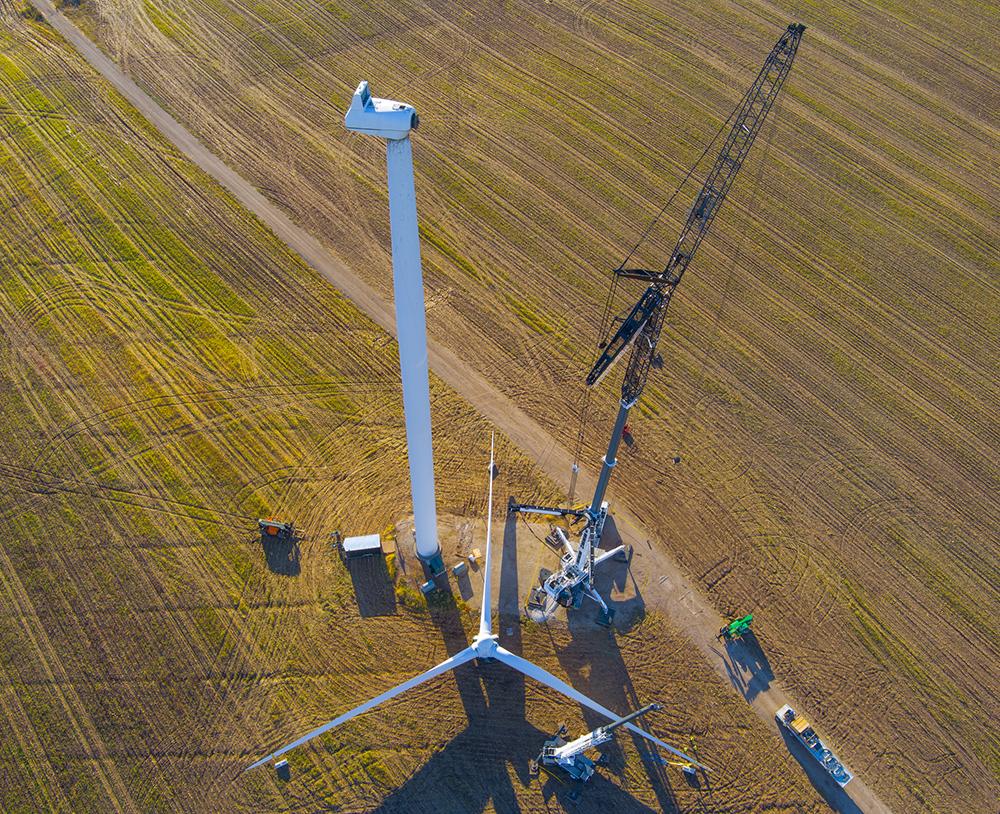Renewable energy’s distinct reclamation path

By Carson Fong, Senior Analyst, BRC-Canada
(October 12, 2023)
We call it clean energy because it produces no carbon emissions. But we’ll be able to use the word again when it comes to end-of-life, reclamation work on wind and solar projects.
Environmental reclamation is an important consideration for any energy development project. Alberta’s current problem with oil and gas well cleanup is the perfect example of this, with the Alberta Energy Regulator estimating outstanding cleanup costs of $77.3 billion for conventional wells and mines combined, as of June 2023.1 2
It seems perfectly reasonable to want to guard against going down that same road with renewables.
But there are a few key differences that make this situation much less likely for renewable energy, compared to oil and gas projects.
Wind and solar resources do not get depleted at a location, unlike an oil or gas well. In fact, wind and solar projects gain value over time, because their production in that location becomes proven, according to the Alberta’s Farmers’ Advocate Office.3 There will be real historical data of how much a project has generated over its lifetime.
This makes it much more likely for a project to get repowered – meaning the equipment gets updated to continue operations – than to get packed up. By swapping out equipment as it begins to age with newer and better equipment, a developer is able to produce more energy in the same physical footprint, without the hassle of finding a new location, negotiating agreements and setting up new infrastructure.
Wind and solar projects are also cost-effective to operate, with most of the expense involved in the initial setup. This makes an already humming project – even if getting a bit long in the tooth – easy to sell, should the developer need to cash out.
If, despite the economics, the decision is made to tear down a project, the project developer has to do a few things to completely reclaim the affected land, according to requirements in the Environmental Protection and Enhancement Act and the Conservation and Reclamation Regulation. This regulation is a strong baseline established by the provincial government for many kinds of activities that cause land disturbance. Of course, it’s also possible for industry to go beyond these regulations, should they choose to do so. But the baseline process would work as follows:
-
Reclamation activities would be based on the reclamation plan submitted by the developer at the time of project application.4
-
First, the project is decommissioned, which involves dismantling all the equipment and infrastructure and removing it from the site.
-
Then, the land must be returned to its original land type through drainage restoration, re-introduction of vegetation and soil replacement.
-
After all this is completed, the developer could then apply for a reclamation certificate, the specific criteria of which depend on the type of land.
Since land lease agreements are private contracts between the developer and the private property owner, financial requirements can be included and built into the development. In contrast to oil and gas developments, a landowner’s participation in a renewable energy project is entirely voluntary. With oil and gas projects, a landowner must come to an agreement with a developer to allow access to the land.5 With renewable energy projects, there is no right of entry or expropriation process.6 This equips the landowner with significant negotiating power to ensure they are satisfied with the clauses of the agreement. And as made clear by the Farmers’ Advocate Office, landowners should include proactive financial guarantees for reclamation like a cash deposit, insurance provision, irrevocable letter of credit, or bond.7
This inclusion of financial security for reclamation is not mandatory but is an accepted practice in the industry. Rural municipalities like Taber have created reclamation bond systems to ensure money is held back for future cleanup for wind and solar projects on municipal land.8 Developer BluEarth Renewables Inc., a BRC-Canada Gold participant, includes reclamation clauses in their contracts with landowners.9 Evolugen, a subsidiary of Brookfield Renewable, has a decommissioning fund set aside for the Sunrise Solar Project in Pincher Creek, in order to cover the cost of cleanup at the end of the project’s life.10
In short, there is a much lower risk of renewable energy projects being orphaned compared to oil and gas developments. To guard against the remaining risk, it is standard practice in the industry to include financial guarantees for reclamation, in case of insolvent or absentee developers. Additionally, compared to oil and gas developments, private property owners have much more leverage to negotiate any additional terms in lease agreements with developers. While there is room for regulatory improvement to ensure these guarantees are not missed, these factors combined put renewable energy development on a path that is unlikely to re-create the orphan well problem.
